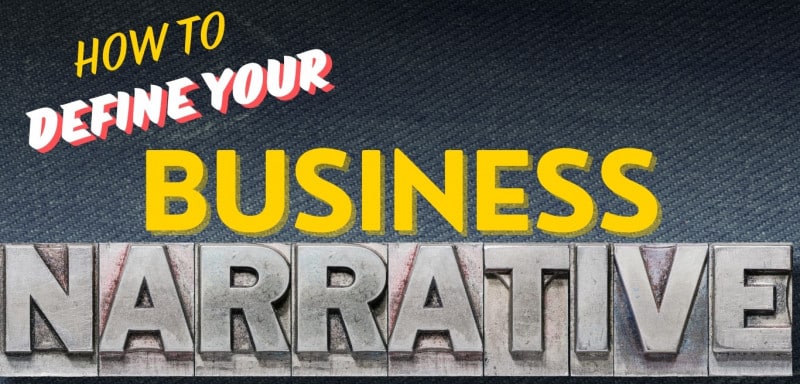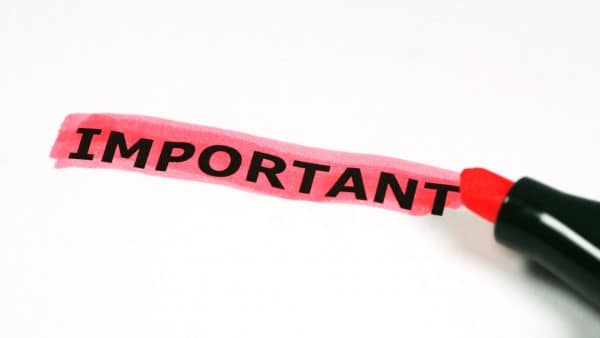
Every business has a narrative. This narrative serves as the lens through which the universe of current and potential customers relates with the business. Some owners craft their narrative, while others allow customers to draw their own conclusions. There exist tremendous advantages to defining it yourself.
What follows is a blueprint for how to do just that.
Before getting into specifics, however, here are a few basic considerations:
- You don’t have to be a writer. You just need to be able to plainly and directly relate the story of what your business does and how it came to do it.
- Resist the urge to plug “Write My Business Narrative” into your favorite AI platform. The purpose of defining your business narrative is to create a personal invitation for customers to relate with your business—not to ensure that your description sounds exactly like everything else published on the internet last week.
- Define Your Business Narrative in Terms of the People You Serve, not the product you sell or how you operate. Ryan Deiss is a really smart guy. He teaches the Marketing in a Digital World class at the Wizard Academy. These words are his, not mine. He is correct in his assessment (and by the way, if you’re reading this you might consider taking the class. It is incendiary. It won’t just get your neurons firing, it will set your brain on fire).
This is the second in a series of articles. The first explains why defining your business narrative is important.
The Foundational Importance of Your Business Narrative
Is your business important to you? Of course, it is. To you, your business is one of one. It is the one and only.
Your business is the beneficiary of your investment of untold hours, focus, and resources. It is the noun and the verb that makes your living and that of your employees. Your business’ success is a destination made possible by hard work, dedication, and commitment. To you, your business is singular.

To its owner, his or her business is singular. A flower in the midst of a desert.
To your entire universe of potential customers, however, your business is not one of one. It is one of many. Absent some reason to feel differently about your business, many might believe it to just like any number of other nameless, faceless options drifting about in a sea of competition.
Your satisfied customers might know and appreciate your points of difference, but for every one of them there might be tens or hundreds of others who are waiting, searching, and hoping to find their preferred alternative for the service that you provide. They are awaiting a reason to know you and to like your business.

To the universe of potential customers, your business is one of many. A flower in a field of flowers.
Most fundamentally, your business narrative is an invitation and a reconciliation. It invites your universe of customers to relate with your company in terms that matter to them. It also reconciles the knowledge and care that you feel for your business with the fact that many potential customers likely do not know or understand your point of difference. The business narrative creates a bridge that connects what makes your approach unique with the universe of people who need your service.

Think before typing. Pictures of melted keyboards are cool. Typing until yours is hot… not so much.
How to Craft Your Business Narrative
Before you sit down at your desk and start melting the keyboard, let’s consider three points. These factors address some of the primary reasons why otherwise good writing can turn sideways. These points involve understanding what matters and relating what’s important sequentially and in the appropriate terms.

Lead with what’s important. Lead with your conclusion.
What is it? Why is it important?
One of the main reasons why bad writing is bad has nothing to do with grammar or syntax. It relates to focus and emphasis. When many people sit down to write all the reasons that their business is great, the best and most powerful reason might be the third or fourth that they list.
This happens consistently. I believe it relates to how our brains work. Thinking is often an iterative process.
When we’re listing ideas or brainstorming, the first couple ideas knock off the cobwebs. The third and fourth ideas often build onto the foundation of the first one or two, uncovering what is actually important.
Many writers never reconcile the order of their list with what’s most important. As a result, they bury their most impactful points. By the time the reader would have read them, they’ve lost interest and moved on to something more fun.
How do you get around this tendency? Think first about what your business is and why it’s important. List your ideas, then revisit the list to identify the most powerful reason. Lead with this.
A little reframing works wonders, but there’s some additional fine-tuning. I once had a job as a writer. I got tired of being the only person who could produce a certain style of content, so I decided to teach someone else how to do it.
We started with the “what is it and why is it important” piece and it considerably improved the result. Being a professional writer, trained and educated, he liked window dressing. The impact was there if you searched for it, but it was buried under a flowery paragraph of introduction.
When you’re after impact and conclusion, however, this window dressing runs contrary to the point. That leads to our second point.
Get To the Point Sooner and Stay There Longer.
Start your business narrative with what your business is and why that’s important. Don’t start with flowery prose. Leave the varnish for the dining room table—not for your words.

An invitation invites. Its takeaway is unmistakable. A business narrative is an invitation. Its conclusion should be similarly impactful.
Lead with your conclusion. Make it inescapable. Tell your customers directly how to understand and relate with your business. Everything you write after this expression will serve to reinforce your premise.
These first two points relate to how to frame your narrative. The third relates to how to express it.
Frame Your Business Narrative in Terms That Matter to the People that You Serve
This third point might sound complicated, but it’s actually simple. If your business serves the place where you live, you already know how to talk to the people there. You now want to make sure that you write for those same people. You want your business narrative to serve as an extension of how you are already communicating.
Remember when we said that you don’t need to be a writer to do this? Many professional writers conflate proving how good they are at writing with effective communication. This is similar to the reason why you should resist the urge to plug your narrative into AI. The result might be grammatically correct, but it will also be nameless, faceless and devoid of the human touch that’s so necessary to create impact and resonance.
As the substantive expert on your business, you are the perfect source for your business narrative. If you are hesitant to talk about it, you might even be more perfect for the job. When I’m writing magazine articles that require nuance or substance (as any good business narrative does), I’ll take one humble “don’t look at me, ask someone else” subject matter expert over 20 of the “look what I can do, ask me!” influencer types.
You know your business. You know how to talk with your potential customers, now it’s time to translate these abilities into a written business narrative. It’s easy.
Here’s a Couple of Approaches
Approach 1: A Written Formula
Write to this format. When you get started, just fill in the blanks. You can populate the details later. Remember, thinking exercises like this are often an iterative process. After you come up with your list, look through it to find the most important. Lead with impact. You can add some detail after you define the main point. Remember, no flowery stuff in the front.
- What Your Business is… What you do and where you do it….
- Who started the business and why….
- Extend a personal invitation to new customers—insert your service and list your two primary points of difference. These points of difference should be relayed in terms of customer benefit.
- What does serving your customers mean to you?
- Conclude with a testimonial from a satisfied customer and a reinforced invitation.
Put these five points together. Shoot for between 500 and 750 words.
Approach 2: Get Yourself Talking on Tape- Transcribe the Good Parts into Your Business Narrative
This is a really good approach. Why?
People talk how they talk. When many people write, however, they write like they think they’re supposed to write. As a result, written products sometimes lose personal touch and impact.
This approach will help you get around this tendency. To make it happen, all you need to do is to video yourself (or have someone else record you) describing your business.
Speak naturally. It might take a bit for you to be comfortable, but don’t worry there is no pressure. You won’t use the video recording for anything and if you don’t like the result, you can just delete it.
Find someone who has been involved with your business for a long time. Maybe this is your spouse, maybe your partner. It could even be a senior employee. Ask each other questions, get each other talking. The more natural the flow, the better the conversation. Ask each other, “When did we start the company?” “Why did we do it?” “What have we learned along the way?” What does it mean for us to serve the places in which we operate?”
“I know that we install X, but what makes what we do better and different? Really… what is it?”
Do this exercise a time or two. If the first time it’s too rigid, repeat it in a day or so. You can even try it after a couple of beers (really). For many people, talking naturally about yourself and your business is like dancing. After a beer or two, it’s easier and more fluid… after six beers, however, it’s never a good idea!

Your internal vision of what you dancing after drinking six beers looks like.
After a couple of days, review your responses to these questions. Write them into the format above. You’re likely to find that the answers are not only better and more impactful, but they are delivered in the language and style spoken by your customers.
- How to Write Your Business Narrative - May 13, 2024
- The Importance of Defining Your Business Narrative - April 5, 2024

